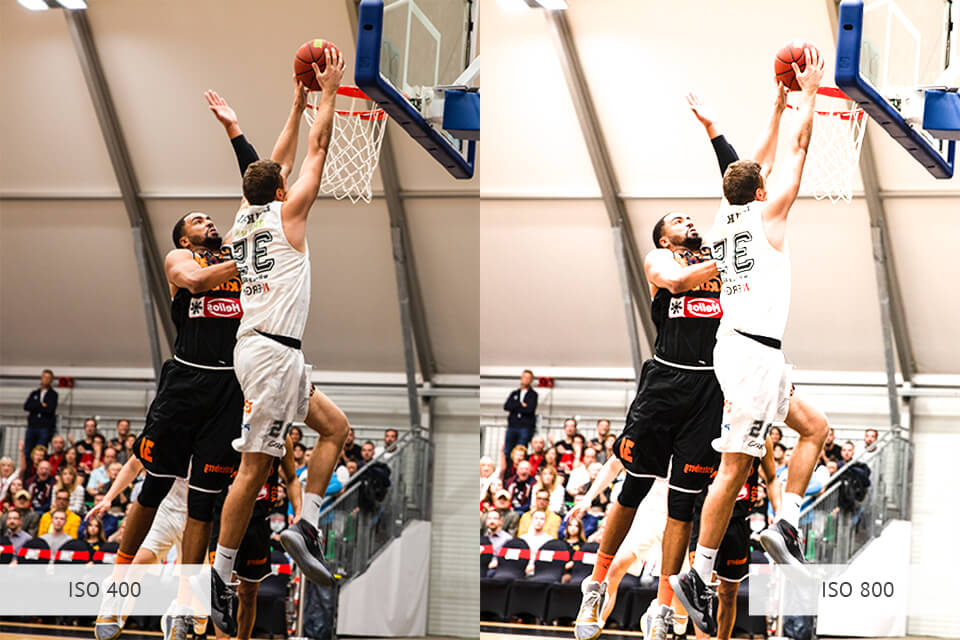Camera Settings For Sports Indoors

The roar of the crowd, the squeak of shoes, the flash of competition – capturing the essence of indoor sports through photography demands more than just pointing and shooting. Often, the dim lighting and fast-paced action inside gyms and arenas turn exhilarating moments into blurry, underexposed disappointments. Mastering camera settings is crucial to freezing these fleeting instances into sharp, vibrant memories.
This article delves into the essential camera settings for achieving professional-quality sports photography indoors. It explores the interplay of aperture, shutter speed, ISO, and white balance, providing a practical guide for photographers of all levels to overcome the challenges of indoor sports environments. By understanding and adjusting these settings, photographers can transform their images from amateur snapshots to captivating visual narratives.
Understanding the Exposure Triangle
The foundation of any good photograph, especially in challenging conditions, lies in understanding the exposure triangle: aperture, shutter speed, and ISO. These three elements work together to determine how much light reaches the camera sensor, ultimately impacting the brightness and clarity of the final image. Achieving a balanced exposure is key to capturing the dynamic moments of indoor sports.
Aperture: Letting in the Light
Aperture, measured in f-stops (e.g., f/2.8, f/4, f/5.6), controls the size of the lens opening. A wider aperture (smaller f-number) allows more light to enter the camera, which is vital in dimly lit gyms. A wider aperture also creates a shallow depth of field, blurring the background and isolating the subject. Aim for apertures like f/2.8 or f/4, depending on your lens capabilities.
Shutter Speed: Freezing the Action
Shutter speed determines how long the camera's sensor is exposed to light. For fast-paced sports, a fast shutter speed is essential to freeze the action and avoid motion blur. Ideally, aim for shutter speeds of 1/500th of a second or faster. Faster shutter speeds like 1/1000th or 1/2000th of a second are even better for capturing incredibly quick movements like a basketball dunk or a volleyball spike.
ISO: Boosting Sensitivity
ISO measures the camera sensor's sensitivity to light. In low-light environments, increasing the ISO can brighten the image, but it also introduces noise or grain. Finding the right balance between brightness and image quality is crucial. Start with a lower ISO like 800 and gradually increase it until the image is properly exposed, but before excessive noise becomes distracting.
White Balance: Capturing True Colors
Indoor lighting often has a color cast, typically yellow or orange from incandescent lights or green from fluorescent lights. Setting the correct white balance ensures accurate color rendition in your photos. Most cameras offer preset white balance options like "Tungsten" or "Fluorescent," or you can use a custom white balance setting using a gray card for maximum accuracy.
Metering Modes: Guiding Exposure
Metering modes determine how the camera measures the light in the scene. Evaluative (or Matrix) metering considers the entire scene and attempts to calculate an average exposure. Spot metering measures the light in a very small area, allowing you to precisely expose for your subject. Center-weighted metering is a compromise between the two, measuring the light in the center of the frame with less emphasis on the edges.
Focusing Techniques: Keeping it Sharp
Sharp focus is critical for sports photography. Continuous autofocus (AF-C or AI Servo) tracks moving subjects, keeping them in focus as they move across the frame. Using a single autofocus point or a small group of autofocus points can help you target your subject accurately. Back-button focus, assigning autofocus to a separate button on the camera body, can improve focus control and tracking.
Lenses: The Right Tool for the Job
The lens you use significantly impacts the quality and composition of your sports photography. A fast telephoto lens with a wide aperture (e.g., 70-200mm f/2.8 or 300mm f/2.8) is ideal for reaching distant action and creating a shallow depth of field. Prime lenses offer superior image quality and wider apertures compared to zoom lenses, but require you to physically move to change your framing. Consider renting lenses if you don't want to invest in expensive equipment.
Post-Processing: Refining Your Images
Even with perfect camera settings, post-processing can enhance your sports photos. Adjusting exposure, contrast, and color balance in software like Adobe Lightroom or Capture One can bring out details and create a more impactful image. Noise reduction can minimize the effects of high ISO settings, and sharpening can improve image clarity. Crop the images to focus on the action and remove distracting elements.
The Future of Indoor Sports Photography
As camera technology continues to advance, expect improvements in low-light performance and autofocus capabilities. AI-powered autofocus systems will become even more sophisticated, accurately tracking subjects and predicting their movements. Computational photography techniques will further enhance image quality, reducing noise and improving dynamic range. These advancements will make it easier than ever to capture stunning images of indoor sports, even in the most challenging conditions.


















